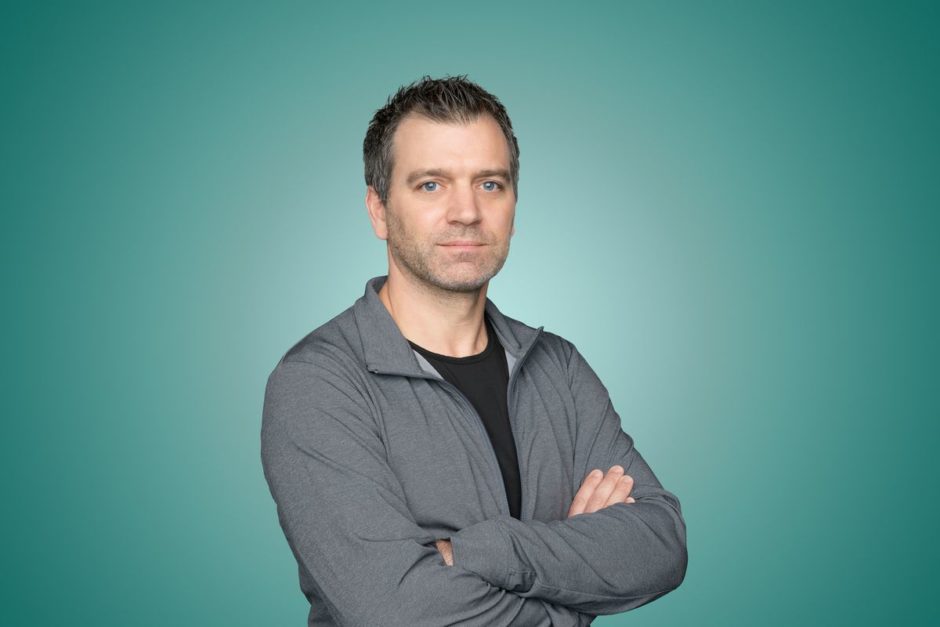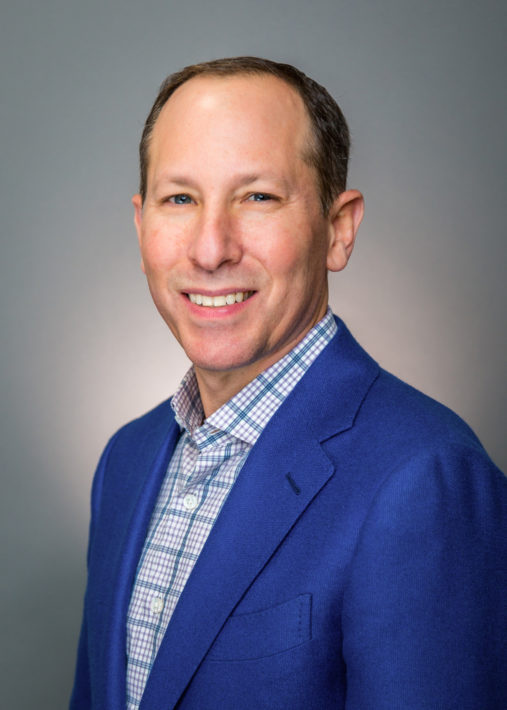Like so many of you, we have been pitching that “telemedicine will be mainstream” for a decade. It always seemed obvious that if you wanted to put an en>re popula>on into the healthcare system – you would have to leverage technology to triage, cast a wider net, and move faster. But where will telemedicine take us by 2040?
Nobody can deny that over the last several months as COVID-19 unfolded, the vision of telemedicine as mainstream has had a “defining moment”. To find out what’s ahead, we sat down with three of the brightest minds & CEO’s in the HealthTech industry and asked them for their opinion on some crucial and burning ques>ons we feel have yet to be answered: What is the most important story today, how will telemedicine companies re-shape the “healthcare norm” post pandemic, and what will next gen virtual care look like?
WHAT IS MINDSTRONG FOCUSED ON RIGHT NOW & WHAT TRENDS ARE YOU SEEING AS THE WORLD CONTINUES TO NAVIGATE THIS GLOBAL PANDEMIC?
“In mental health specifically, and Mindstrong in particular, we are focused on people with serious mental illness, or the “SMI” population. People diagnosed with bipolar disorder, for example. Most of these people are diagnosed in their late teens, early 20’s and it’s something you have for the rest of your life. In this COVID crisis, these members are more at risk. Our goal is to help people manage their symptoms at home, so they can avoid the hospital, and stay safer during these times; it’s more important than ever before. In terms of front line responders, we are seeing that if it’s not essential… people are staying at home. And, what’s been interesting is that while we’re treating members by providing behavioral healthcare, we are fielding other medical questions as well. We are in a unique situation, providing care to a vulnerable population that is having trouble accessing healthcare. We are 100% virtual and we were before this pandemic, luckily we didn’t need to adapt our technology.”
HOW IS COVID CHANGING THE MENTAL HEALTH PROFESSION?
“When you look at behavioral health – there’s an entire spectrum, it can be mild, medium, or serious. Between mild and moderate you have easier access to therapy services. On our end, the most serious, the crisis doesn’t change the access to care as much. This particular group doesn’t have access to care, and it’s unfortunate what’s happening in our country. It costs payers $20B per year to take care of mental health patients with practices that we’ve used for hundreds of years. If you need chronic care and the next appointment is a week away- that doesn’t help you. And we’re at a state where people are being expected to wait MONTHS. You need care today. More than ever, it’s important for everyone to be able to access virtual care during these times. And a time when they need it, not when a business can offer it. What I think, in general, is that this archaic stigma surrounding mental health is starting to dissipate. But there’s still more work to do. This crisis has definitely helped. People are lonely, and it’s a big indicator. Telemedicine is the breakthrough for COVID-19. It is being accepted for and by the population. I think there’s a bit of a “wake up” moment in America. Telemedicine is becoming mainstream. Before the pandemic, you likely went to a clinic and talked to a psychologist in person, versus talking to someone remotely. With the CMS putting in place some emergency measures around telemedicine cost-sharing, and cross-state licensure, we hope it will be permanent- it’s only the right thing to do. What you can’t forget in healthcare is that in order to make it sustainable, you need to follow the money and make it business-driven. If you don’t have a consistent path from where the money comes from, you will have a very hard time. We work with large payers and we could not do it without them. Just creating technology will not get you far in the HealthTech space. Lives are at stake. Things move slower because of that.”
WHAT’S THE UNTOLD STORY?
“The members in our care can create a new, healthier, more balanced life for themselves. We actually had a member who was a heroin addict living on a farm in Texas. His father was dying and he wasn’t able to leave his property often, and didn’t have access to therapy. Through Mindstrong, he now has a therapist, and accessibility is no longer an issue for him. There are rare cases where our members initially have a hard time with adjusting to telemedicine, as patients with serious mental illnesses don’t always want to use video because they might not always feel comfortable in that moment. However, we are finding are finding that after the first 1-2 sessions they are really embracing the technology and 24/7 accessibility. I wouldn’t consider a barrier at all. They’re very grateful to have access.”

DISPELLING STIGMAS WITH DANIEL GRAF
CEO OF MINDSTRONG
Mindstrong is dedicated to transforming mental health through innovations in virtual care, data measurement, and data science through their in house platform.
WHAT IS MINDSTRONG FOCUSED ON RIGHT NOW & WHAT TRENDS ARE YOU SEEING AS THE WORLD CONTINUES TO NAVIGATE THIS GLOBAL PANDEMIC?
“In mental health specifically, and Mindstrong in particular, we are focused on people with serious mental illness, or the “SMI” population. People diagnosed with bipolar disorder, for example. Most of these people are diagnosed in their late teens, early 20’s and it’s something you have for the rest of your life. In this COVID crisis, these members are more at risk. Our goal is to help people manage their symptoms at home, so they can avoid the hospital, and stay safer during these times; it’s more important than ever before. In terms of front line responders, we are seeing that if it’s not essential… people are staying at home. And, what’s been interesting is that while we’re treating members by providing behavioral healthcare, we are fielding other medical questions as well. We are in a unique situation, providing care to a vulnerable population that is having trouble accessing healthcare. We are 100% virtual and we were before this pandemic, luckily we didn’t need to adapt our technology.”

BUILDING SOLUTIONS WITH JASON GOREVIC
CEO OF TELADOC
Teladoc Health offers a comprehensive virtual care solution capable of serving organizations and people anywhere from general medicine, to mental health, and complex care.
WHAT IS THE BIG IMPACT FOR PROVIDERS AS A RESULT OF COVID?
“Everything’s changed. Half of all physicians are now using telemedicine – up from 18 percent just two years ago – and we expect that number to continue to grow. We are helping providers make the shift at every front door to care, whether through direct delivery of medical care through our Teladoc Health Medical Group, supporting major health systems and hospitals to connect with their patients beyond their walls, and now helping those facilities connect inside their four walls with our InTouch Health acquisition. Virtual care is the new norm. Some providers saw telemedicine as strategic; others saw it as ancillary. Now most see it as table stakes and a requirement going forward. The genie is not going back in the bottle. This has changed how consumers expect to get care, how physicians expect to deliver care- the efficacy has been proven. There is no going back.”
HOW DOES TELEMEDICINE GO BEYOND TRIAGE?
“Virtual care is far more than triage. We’ve been delivering a broad range of acute and specialty care to patients for more than a decade. Think of a type of medical care and I bet we are either delivering it directly or helping our clients deliver it somewhere in the world. For instance, our dermatologists use video and photo uploads to diagnose and treat skin conditions every day. Intouch Health does telestroke where the remote neurologist is overseeing the administration of life saving treatments. We have neonatal intensivists overseeing the incubation of newborns in the NICU using telemedicine. And we have a massive and rapidly growing mental health business where psychologists and psychiatrists are providing care to thousands of mental health patients. We are already delivering the full spectrum of medical care through telemedicine, not just triaging patients.” Teladoc Health offers a comprehensive virtual care solution capable of serving organizations and people anywhere from general medical, to mental health, and complex care.
WHAT WAS THE TURNING POINT FOR TELADOC?
“I would say that there hasn’t been one single moment. Our dramatic growth over the past several years has been fueled by our consistent focus on building the global leader in virtual care while always delivering on our promises. This means building a scalable and reliable global technology platform that can serve patients directly, partner with health plans and employers and support health systems and physician groups. Our organic innovation and inorganic expansion have remained focused on improving the breadth and quality of our virtual care offerings in a world that increasingly values integration over point solutions.”
WHAT DO YOU SAY TO THE NEXT GENERATION OF SILICON VALLEY INNOVATORS?
“Many consumers expect telemedicine to work with their local doctor, pharmacy and lab, not “disrupt” them. So, I don’t necessarily think healthcare gets disrupted in same way you’ve seen other sectors impacted. I think that we need to work with the healthcare system to transform it but disrupting it from the outside in hasn’t proven to be the best approach. That’s where you’ll find the Silicon Valley roadkill. There have been many who have tried to “disrupt” healthcare from the outside in and they’ve failed. It’s too complex and too interrelated. I’m always cautious about unintegrated DTC healthcare offerings that are really consumer friendly on the surface but aren’t wired into the system. We’ve always looked to work with the payers, work with the providers to transform how people get care, and not to disrupt it from the outside in. That has served us well and has enabled us to scale and respond as volume more than doubled overnight at the start of the coronavirus pandemic.
I think the challenge is that it’s hard because building a point solution is just a point solution. When you’re starting out, you can’t boil the ocean; you can’t build a broad solution. You need to stay focused. Unfortunately, point solutions are becoming less interesting for the consumer and the B2B buyer. More often than not, they’re looking for a broad solution that fits the majority, if not all, of their needs. We want to be the destination for consumers regardless of what their clinical need is. That’s a challenge.
The other big challenge is building something that’s truly scalable. We always said Teladoc was scalable. We proved it when we doubled providers overnight and our technology operated perfectly, and we were able to double our users overnight. Others faltered when it came to the performance of their technology platforms. I say that not to pound my chest, but to recognize that building something that’s truly scalable is really hard, and if you have something that actually works and provides value and all of a sudden you see the inflection point in that adoption curve…. You’d better be ahead of it. COVID tested our systems to 10x peak volumes. It’s not to say that we have providers waiting on the platform for 10x volume, but we knew that we could access those physicians. The technology withstood the spike in volume.”
WHAT STORY IS BEING MISSED?
“I think the breadth of the kind of care that people are getting is not fully appreciated. I think there’s still an assumption that people are just seeking care for basic things, and all the data shows that’s actually not true. The pandemic has driven consumers’ openness to virtual care to record levels, with 60 percent of our visits coming from new patients. We have the opportunity to show individuals, providers and the marketplace the full potential of telemedicine and we could not be more excited for this opportunity to transform care.”

TRACKING CHANGES IN HEALTHCARE WITH HILL FERGUSON
CEO OF DOCTOR ON DEMAND
Doctor on Demand lets you avoid the hassle, wait, and cost of a walk-in clinic, urgent care, or ER. You can chat virtually through video with a doctor 365 days a year — weekends and holidays included.
WHAT IS THE MOST IMPORTANT STORY TODAY?
One of the things I’ve been thinking a lot about is, why does it take a global pandemic for the US healthcare system to do the right thing? It’s taken a complete “act of God” to get health insurance, doctors, patients, etc. to act rationally around offering healthcare at a lower cost at more convenient terms for the patient. It’s a massive event that’s forcing change in the healthcare system, putting it under a microscope, and letting everyone see the inefficiencies as a result of coronavirus. People tend to do the right thing, but only after they’ve done everything else. We can do a lot better, but where do we go from here? What does a healthcare system do when the vaccine is here? Do we snap into old habits? Have we broken away enough to never go back? That’s on a lot of peoples’ minds right now, including mine.
WHAT IMPACT ARE YOU SEEING ON PROVIDERS?
Doctor On Demand employs our docs, which is a different model than some of the other telemedicine businesses. We have been employing doctors for years who have been burnt out by the brick and mortar environment. COVID-19 has sadly driven practices to bankruptcies really quickly. There is no shortage of doctors who are looking for new forms of work. If providers can continue to get paid for treating patients remotely then telemedicine will continue to grow. How will that evolve? Will people look at the data and say, you know it’s worth paying for because it kept someone out of a dangerous situation? Or it kept someone from going to the ER? There will be interesting studies built on this period in particular. Pricing starts with CMS. If doctors can get paid for remote treatment, they will use it. I strongly believe that it should be reimbursed, I think there will be too much inertia to go back to “normal”, but it’s debatable.
WHAT CHANGES ARE YOU TRACKING IN HEALTHCARE?
I look at that sort of tension–or fight if you will–through the consumer’s eyes. The liberation of people’s health data is going to mean that consumers have more control and with more control, more choice. It breaks a bit of the stranglehold on portability of data. This is powerful for consumers and should result in better outcomes. Data should be able to travel with you and doctors should be able to see if their patient already had this test or treatment.
I’m also watching the impact on pricing. For example, rural hospitals have difficulty attracting local providers to their towns. The hospital system where I’m from in Kentucky was always trying to recruit different specialists and they would need to pay higher salaries as incentive. With more flexible virtual care, communities can access care that lives in a different location. It frees up the marketplace more and you can get better pricing, which will result in lower cost overall.
I think one of the most exciting things happening in healthcare is the road being paved to broad scale adoption of value-based care. It’s a term that refers to paying for value vs. paying for service. Making sure patients are paid for; keeping them out of hospitals, not giving incentives for unnecessary surgeries, etc. That’s one of the evils of our system, nobody has been able to break that. Virtual care paves the way for healthcare systems to realize that you can create new models. You can leverage virtual to drive a lot of costs out of the system and rebuild from the ground up. Some systems may need to go out of business. You look at hospitals around the country that will go bankrupt because they’re not doing the surgeries they need to be doing. Why are they making money that way? Why don’t they get a steady recurring revenue that pays them to do their job whether there’s demand or not? That is an optimistic view.
WHAT ADVICE DO YOU GIVE TO STARTUPS TRYING TO MAKE IT IN HEALTHCARE?
I think as a general rule, the general health companies who want to get to scale have to find a way to work with traditional healthcare players- providers, payers, self-insured employers. If you can develop a product/service that aligns with one of those three players, you have a fighting chance to get to scale. If you want to charge them outside of the system, then you need a valuable value prop that will get to scale. GoodRx, Ro, Hims, etc have gotten to scale on a product that is just so compelling for consumers. Start-ups need to figure out how to go to market. That’s the most important thing you’ll need to solve for. The product is important, but how you get it to scale is the most challenging thing about being in healthcare.
